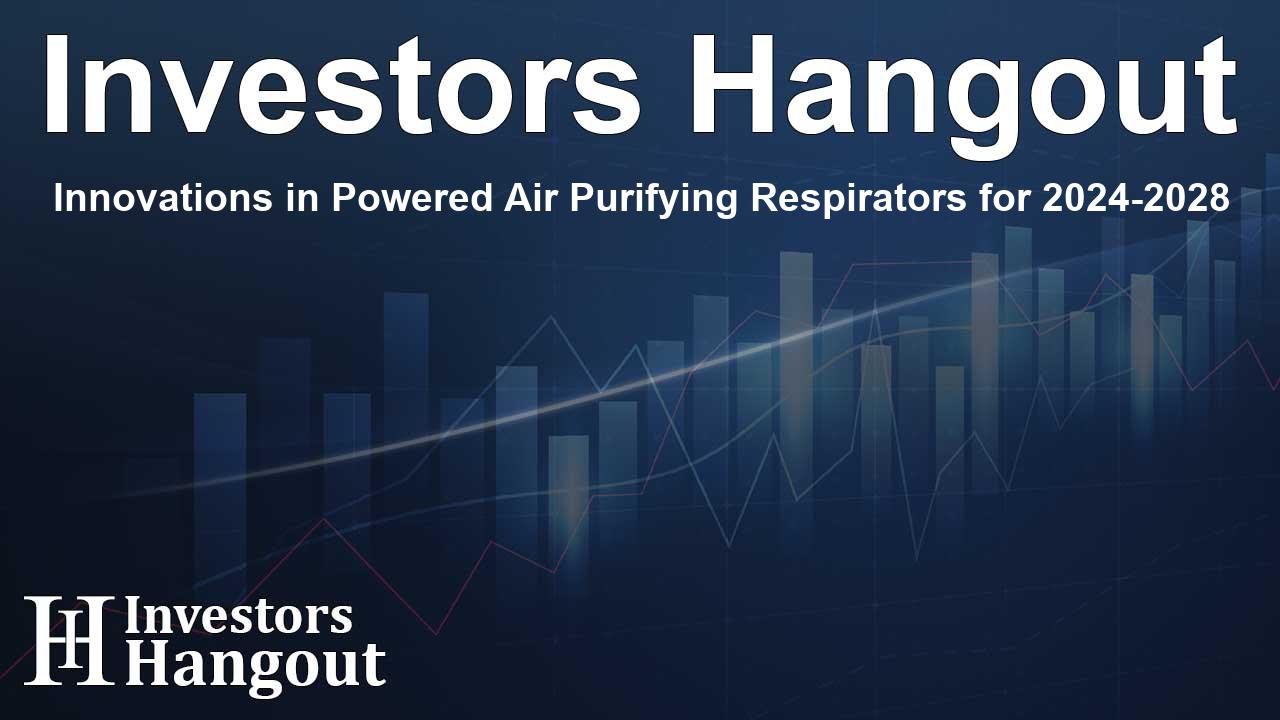Innovations in Powered Air Purifying Respirators for 2024-2028

Innovations in Powered Air Purifying Respirators for 2024-2028
The global market for powered air purifying respirators (PAPRs) is on the brink of significant growth, projected to expand by USD 1.7 billion from 2024 to 2028. This surge is driven by increasing demand across various industries as innovative technologies, particularly artificial intelligence (AI), reshape how we approach safety and efficiency in personal protective equipment.
A Surge in Demand for Safety Equipment
As organizations strive to enhance workplace safety, the need for effective respiratory protection has never been clearer. The rise in workplace hazards, particularly in areas exposed to pollutants, has facilitated greater investments in advanced safety solutions such as PAPRs. These devices provide a layer of defense against airborne contaminants, making them essential in industries like healthcare, manufacturing, and emergency response.
The Role of AI in Enhancing Respirator Technology
Artificial intelligence is at the forefront of this market evolution. By leveraging AI-driven analytics, manufacturers are able to optimize the design and functionality of PAPRs. These improvements not only enhance the comfort and usability of the devices but also increase their effectiveness in filtering harmful particles. AI software is increasingly used for predictive maintenance, ensuring that these respirators remain in viable operational condition.
Market Dynamics and Influencing Factors
Several key factors are contributing to the accelerated growth of the PAPR market. First, emergency management teams are increasingly favoring these devices for their reliability in hazardous environments—this is particularly relevant amidst growing concerns regarding public health and safety. Emergencies, whether natural disasters or health crises, demand effective respiratory protection to ensure the safety of first responders.
Industry Applications and Segments
Various sectors are driving the demand for PAPRs. In the healthcare sector, their use has surged due to the heightened exposure to pathogens. Additionally, industries such as pharmaceuticals and petrochemicals are significant users, as the need for protection against harmful airborne particles is crucial. PAPRs come in different forms, such as full-face masks and half-masks, catering to the diverse needs of these industries.
The Challenge of Competition
While the PAPR market is booming, it faces competition from alternative respiratory solutions. Devices like N95 respirators and traditional face masks offer cost-effective options, which can hinder the widespread adoption of PAPRs among smaller businesses. However, the superior protection offered by PAPRs against airborne illnesses solidifies their position in high-risk environments.
Future Market Trends
The powered air purifying respirator market is poised to continue evolving with technological advancements. Features like smart filters and integrated monitoring systems are expected to become commonplace, offering users real-time feedback on air quality and equipment status. Such innovations not only enhance user safety but also improve operational efficiency.
Focus on Occupational Safety
Regulatory pressure regarding occupational safety is likely to bolster the demand for PAPRs. Organizations are increasingly understanding the importance of minimizing exposure to hazardous substances. Additionally, stricter regulations on air quality underscore the necessity of effective respiratory protective equipment.
The Importance of Training and Compliance
Another critical aspect of effective PAPR utilization is employee training. Ensuring that workers know how to properly use and maintain their respiratory protection equipment is essential for maximum safety. Companies are investing in training programs to ensure compliance and to foster an organizational culture focused on health and safety.
Conclusion: A Bright Future for PAPRs
As we look ahead to the market landscape for powered air purifying respirators, it is clear that innovation and demand will fuel growth. With projected increases in funding for public safety and health, the powered air purifying respirator market is set to thrive in the coming years. Strengthening the focus on technology, compliance, and employee education will only further enhance the impact of these critical safety devices.
Frequently Asked Questions
What is the expected growth rate of the PAPR market?
The powered air purifying respirator market is estimated to grow by USD 1.7 billion from 2024 to 2028 at a CAGR of approximately 10.51%.
Why is AI important for PAPR technology?
AI enhances PAPR technology by optimizing design, functionality, and predictive maintenance, improving user safety and equipment reliability.
What industries are major consumers of PAPRs?
Major consumers of PAPRs include healthcare, pharmaceuticals, petrochemical, and emergency response sectors, all requiring effective respiratory protection.
How do PAPRs compare to N95 respirators?
PAPRs provide superior protection against airborne pollutants and pathogens compared to N95 respirators, making them suitable for higher-risk environments.
What is the significance of employee training with PAPRs?
Training ensures that employees utilize respirators effectively, maintain compliance with safety regulations, and foster a culture of health and safety in the workplace.
About Investors Hangout
Investors Hangout is a leading online stock forum for financial discussion and learning, offering a wide range of free tools and resources. It draws in traders of all levels, who exchange market knowledge, investigate trading tactics, and keep an eye on industry developments in real time. Featuring financial articles, stock message boards, quotes, charts, company profiles, and live news updates. Through cooperative learning and a wealth of informational resources, it helps users from novices creating their first portfolios to experts honing their techniques. Join Investors Hangout today: https://investorshangout.com/
Disclaimer: The content of this article is solely for general informational purposes only; it does not represent legal, financial, or investment advice. Investors Hangout does not offer financial advice; the author is not a licensed financial advisor. Consult a qualified advisor before making any financial or investment decisions based on this article. The author's interpretation of publicly available data shapes the opinions presented here; as a result, they should not be taken as advice to purchase, sell, or hold any securities mentioned or any other investments. The author does not guarantee the accuracy, completeness, or timeliness of any material, providing it "as is." Information and market conditions may change; past performance is not indicative of future outcomes. If any of the material offered here is inaccurate, please contact us for corrections.